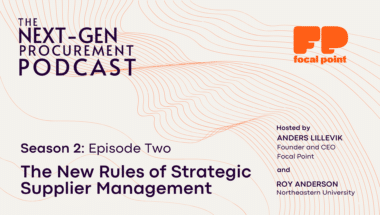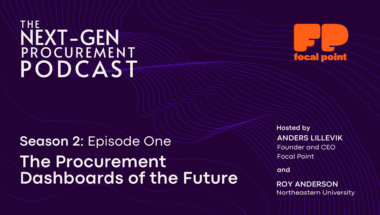This article was originally published in Supply Chain Digital by Louis Thompsett.
Anders Lillevik is CEO and Founder of Focal Point. Established just over four years ago, Anders has helped the company achieve rapid growth, leveraging his 25+ years of experience in the procurement space, and as a former Chief Procurement Officer for several large-scale organisations.
It was time spent as head of procurement at these large organisations that inspired Anders to found Focal Point.
“Despite the high costs of implementing procurement tech, the challenge was always in sourcing – particularly when it came to supplier management – which typically relied on the worker using Excel,” he says.
“Working this way, it was hard to manage at scale at these large-scale organisations.
“That’s why I started Focal Point, to create a solution where procurement activities can be effectively tracked, big or small, whether that’s a complex request for proposal (RFP) to a contract renewal. With Focal Point, you know what’s being done and who’s doing it.”
The principles of procurement orchestration
At Focal Point, there are several guiding principles for effective procurement orchestration. The first is the need to normalise and consume data; the second is to have data work across conditional and contextual workflows – with consumed data needing to be centralised and viewable.
Thirdly, automation can occur, because everything related to a particular supplier or stakeholder is displayed in a singular view.
“We have a platform that sits on top of existing infrastructure that performs many roles in addition to normalising and centralising data,” says Anders.
“It allows users to see a supplier’s open POs, contracts, invoices and risk categories in one convenient location.”
A CoupaLink-certified partner
The success of Focal Point has seen it become a CoupaLink-certified partner. Today, it has two Coupa relationships, recently partnering with Coupa to help deliver project management and procurement operations around tracking, savings and cycle times.



